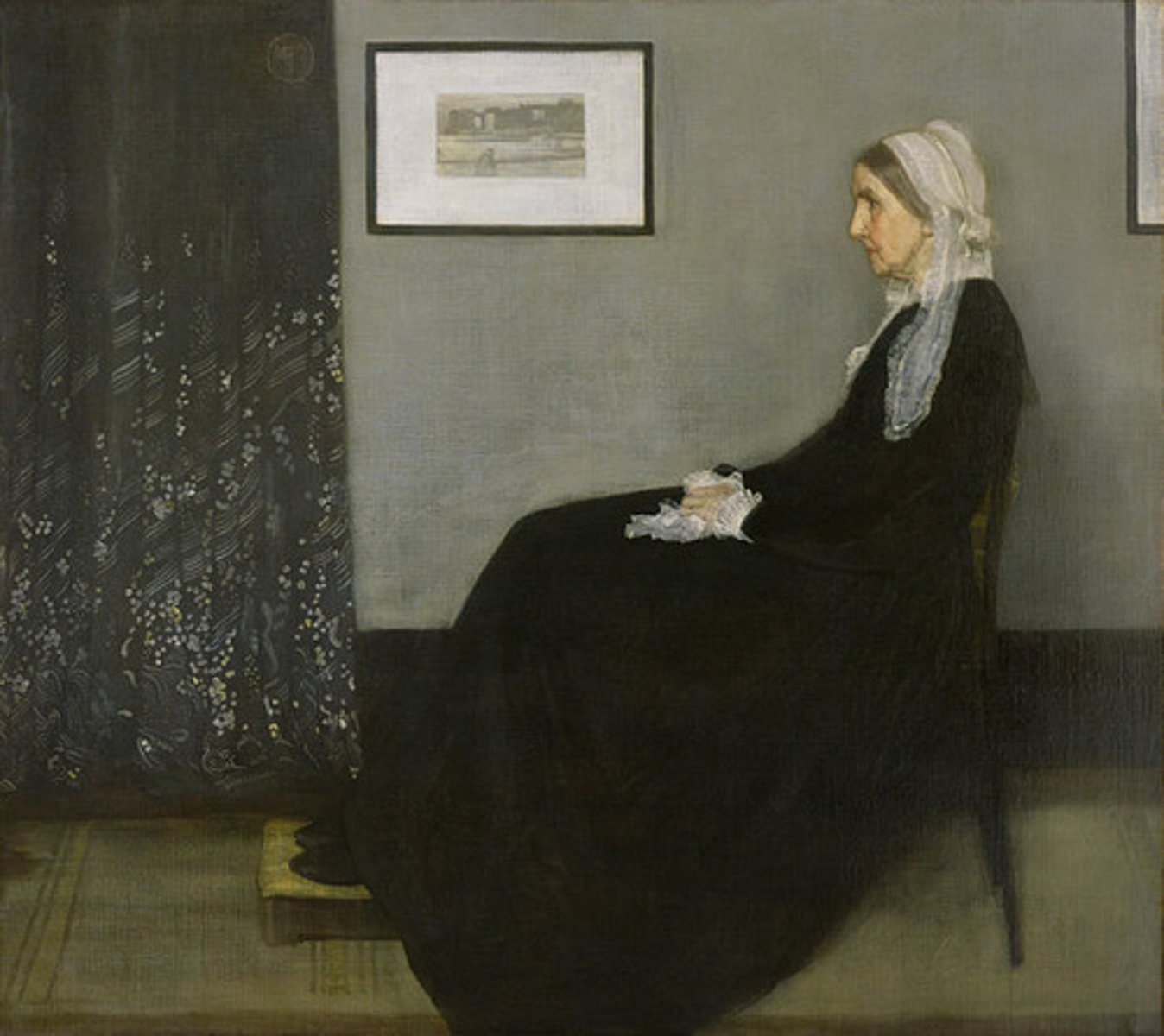Final Exam (Intro to Modern Art)
1/38
There's no tags or description
Looks like no tags are added yet.
Name | Mastery | Learn | Test | Matching | Spaced |
|---|
No study sessions yet.
39 Terms
Honore Daumier
Known for political caricatures and scenes of modern Parisian life
Third Class Carriage
Honore Daumier, 1862-64. Depicts class issues in modern Paris. Members of different class were able to mingle. Carriage for middle-lower class
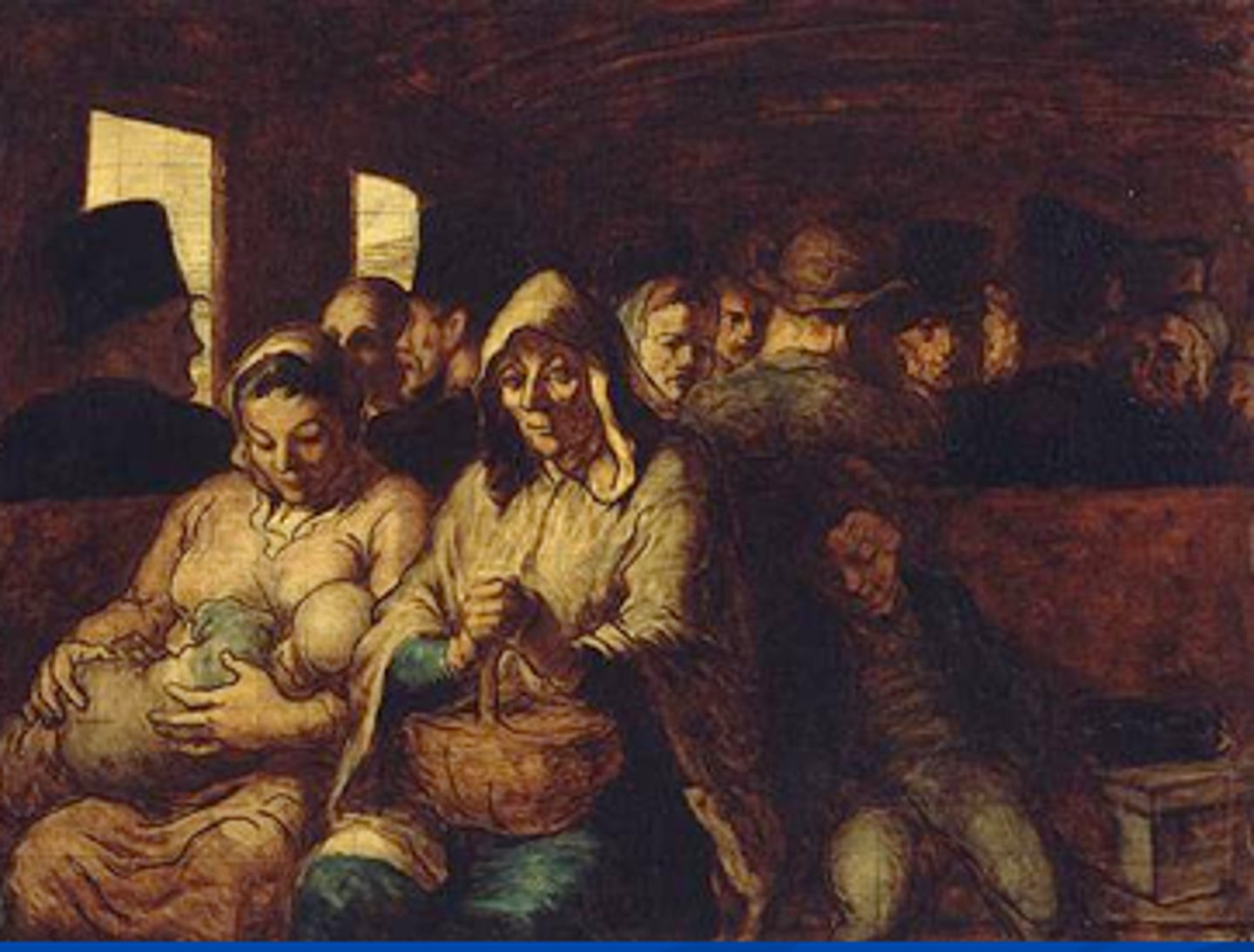
Asher B. Durand
Head of the 2nd Generation Hudson River School. Believed in fidelity to sketching specific landscapes, but would create “mash-ups” of geographical locations
Kindred Spirits
Asher B. Durand, 1849. Imaginary landscape. Thomas Cole and William Cullen Bryant in the painting. Commissioned when Cole passed away as a homage
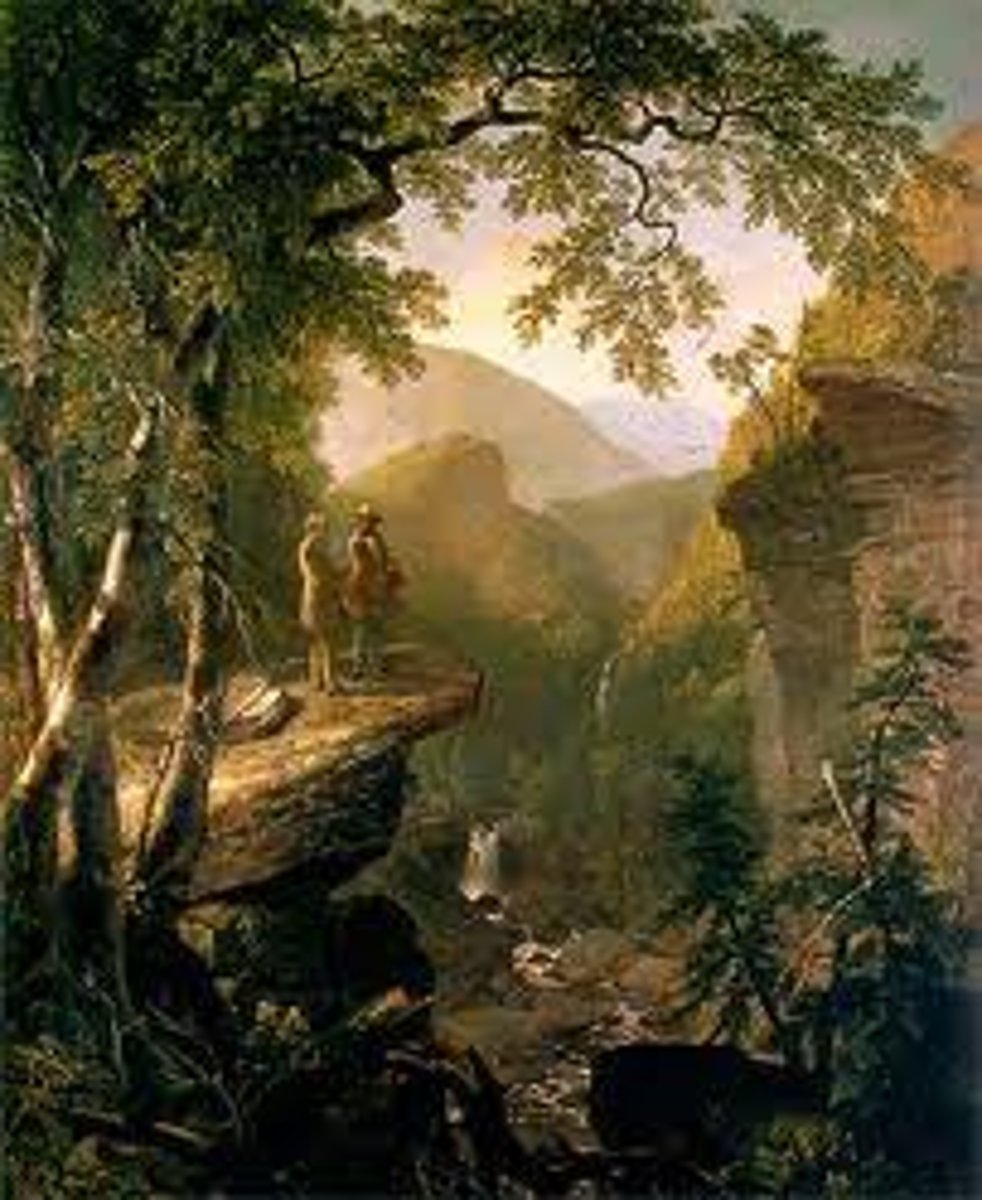
Friedrich Edwin Church
Important American landscape painter, only student of Thomas Cole.
Niagara
Friedrich Edwin Church, 1857. Large-scale painting with unusual, powerful viewpoint of the Niagara Falls. Visual power of the American landscapes
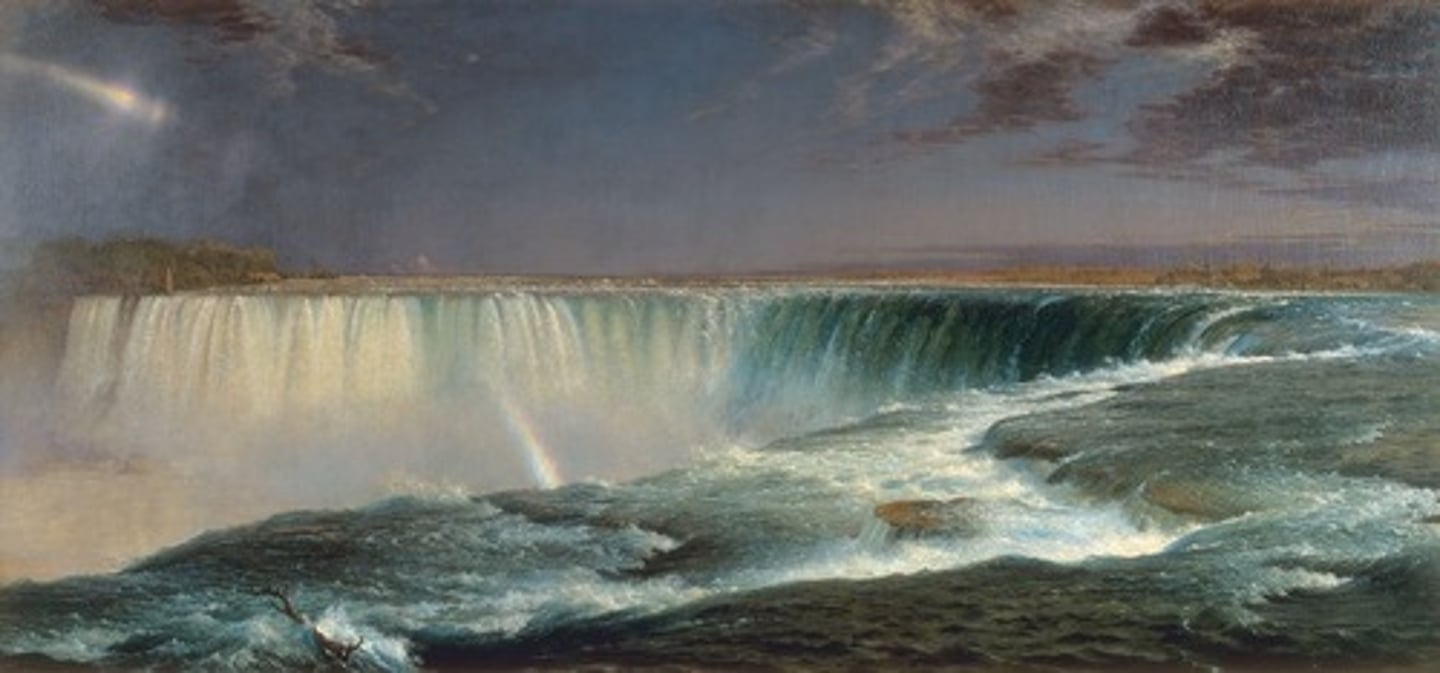
Heart of the Andes
Frederic Edwin Church, 1859, oil on canvas
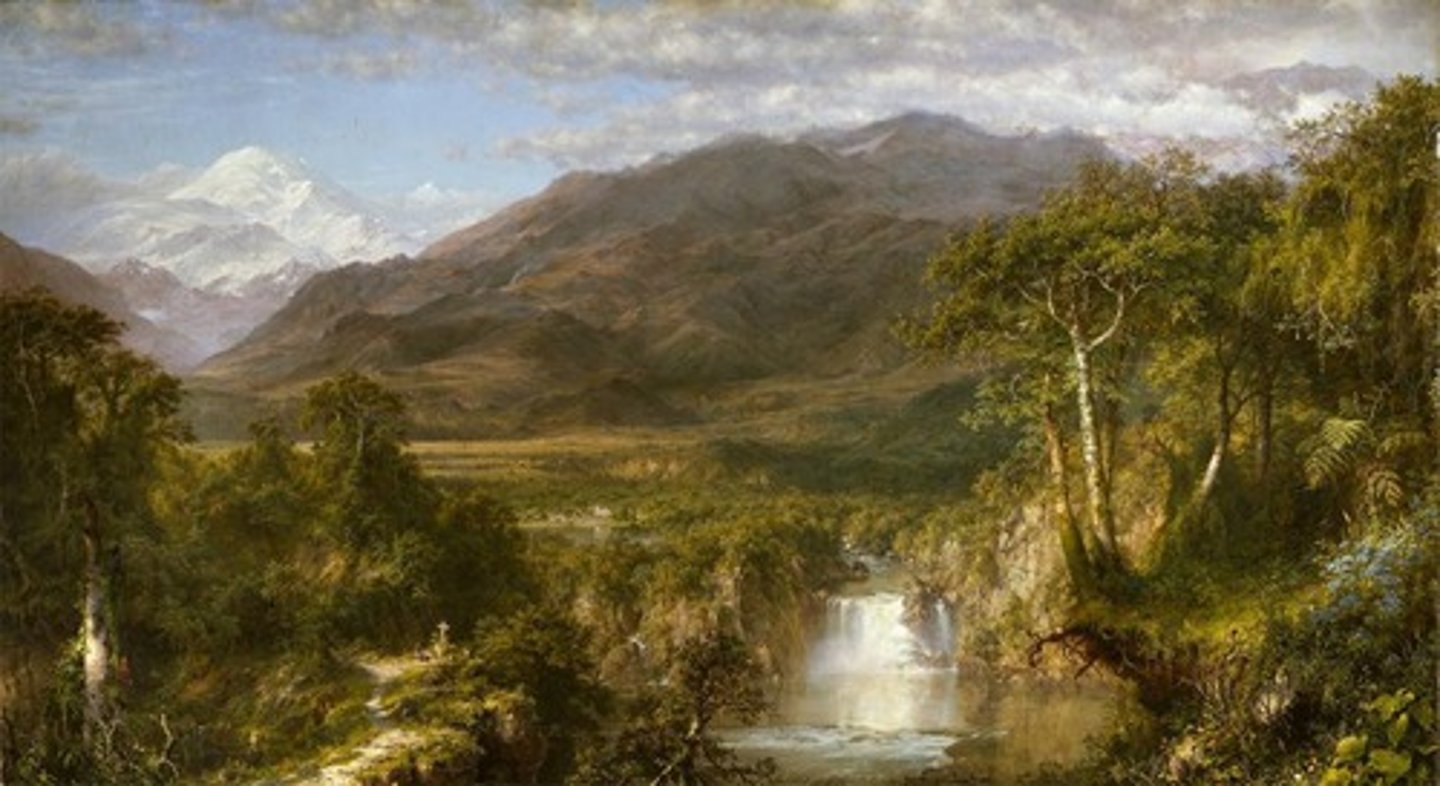
Albert Bierstadt
German immigrant known as the great painter of the “Mythic American West”. Most had no clue what the American West looked like
The Rocky Mountains, Lander’s Peak
Albert Bierstadt, 1863. An imaginary, “mythological” scene of the US. The goal was not to have a topographically correct painting, but to show the concerns about the impact of westward expansion on Native Americans

Edouard Manet
Artist was a realist. Never exhibits with the impressionists. Interacted with modern life in order to paint modern life
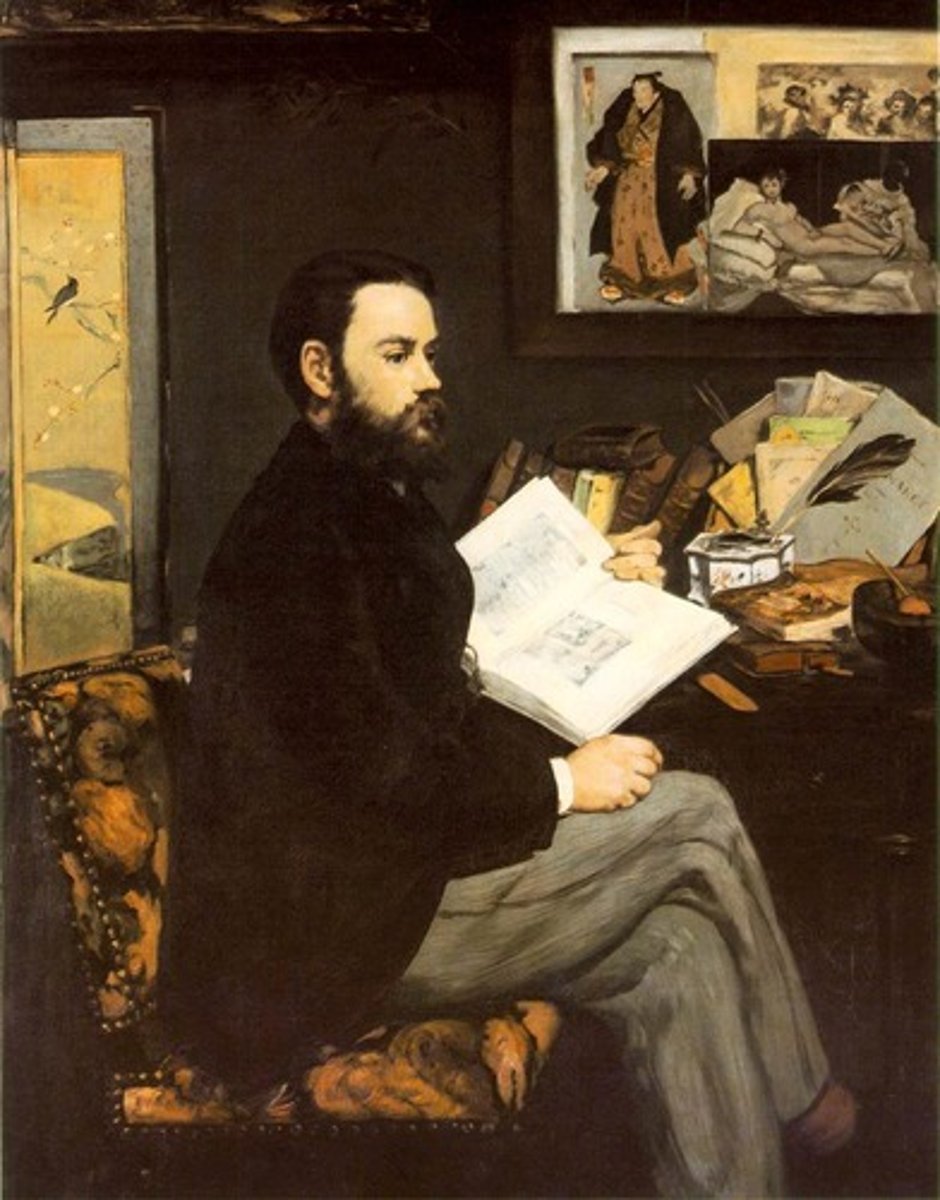
The Luncheon on the Grass
Edouard Manet, 1863. Blurred the lines between fact and fiction. Rejected from the Salon & shown at the Salon des Refuses
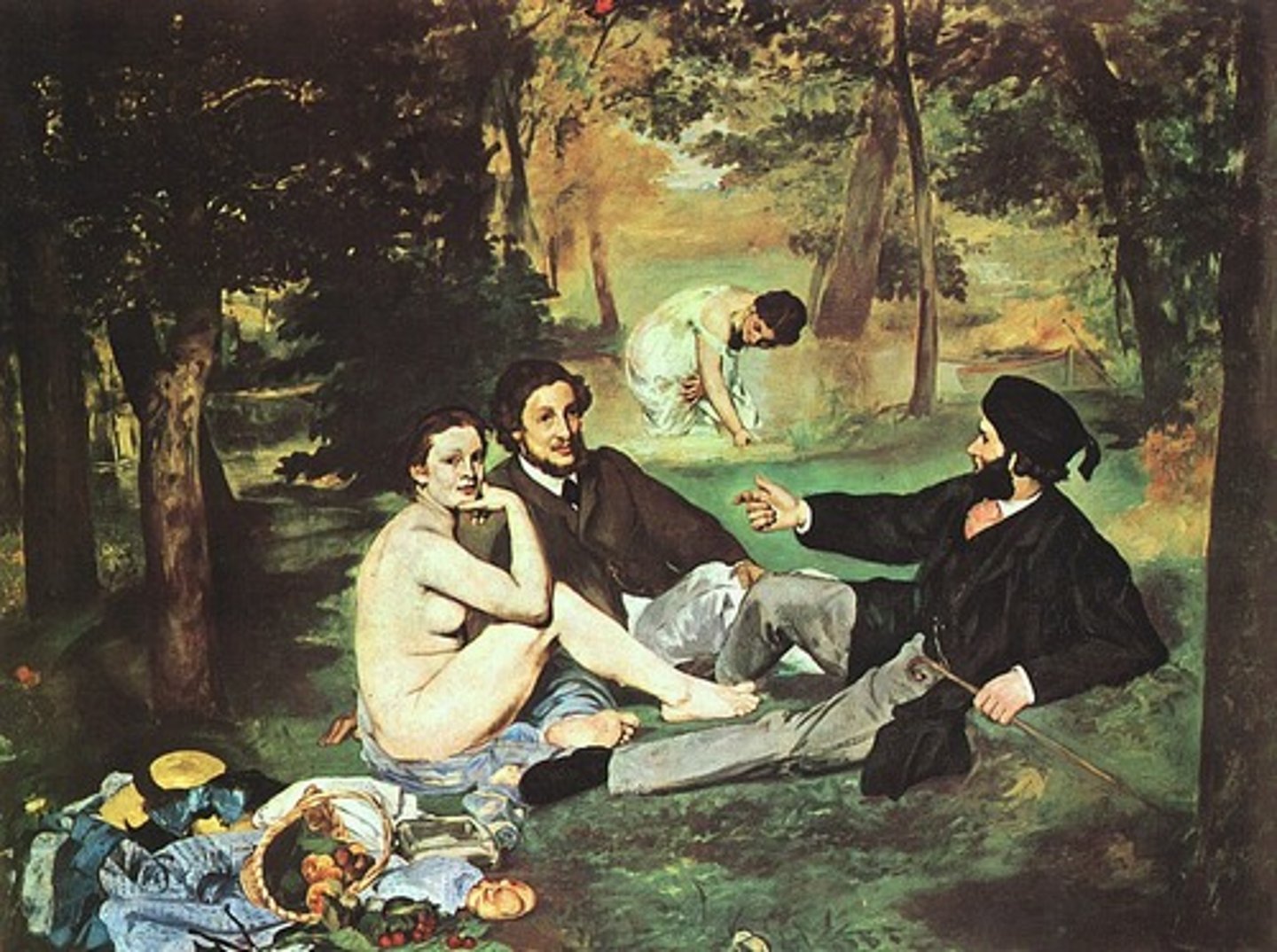
Salon des Refuses
French for "exhibition of rejects" is generally an exhibition of works rejected by the jury of the official Paris Salon.
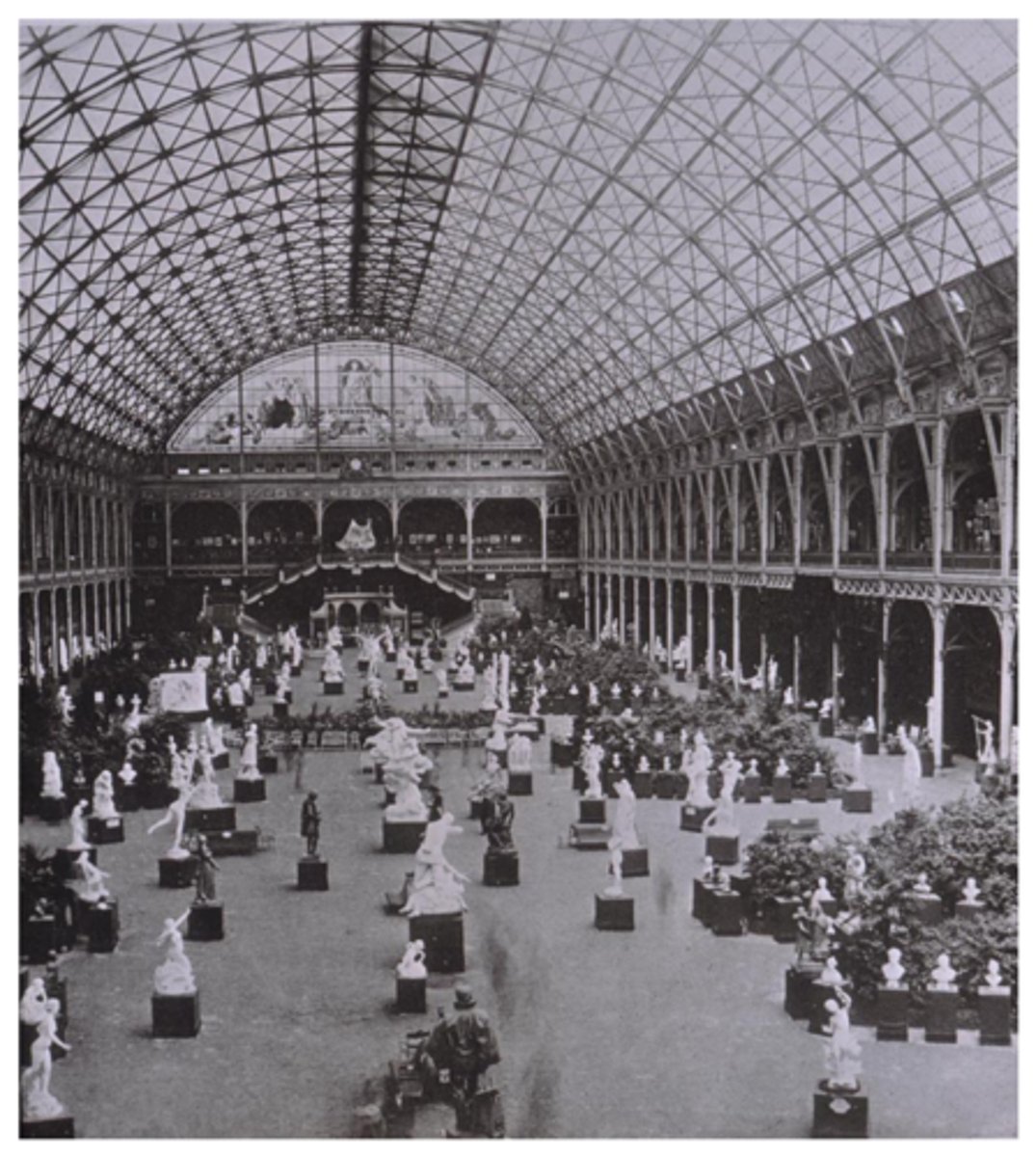
A Bar at the Folies-Bergere
Edouard Manet, 1882, oil on canvas. Mediation of modern life. Manet was sympathetic towards working class women, as many were sex workers to make money
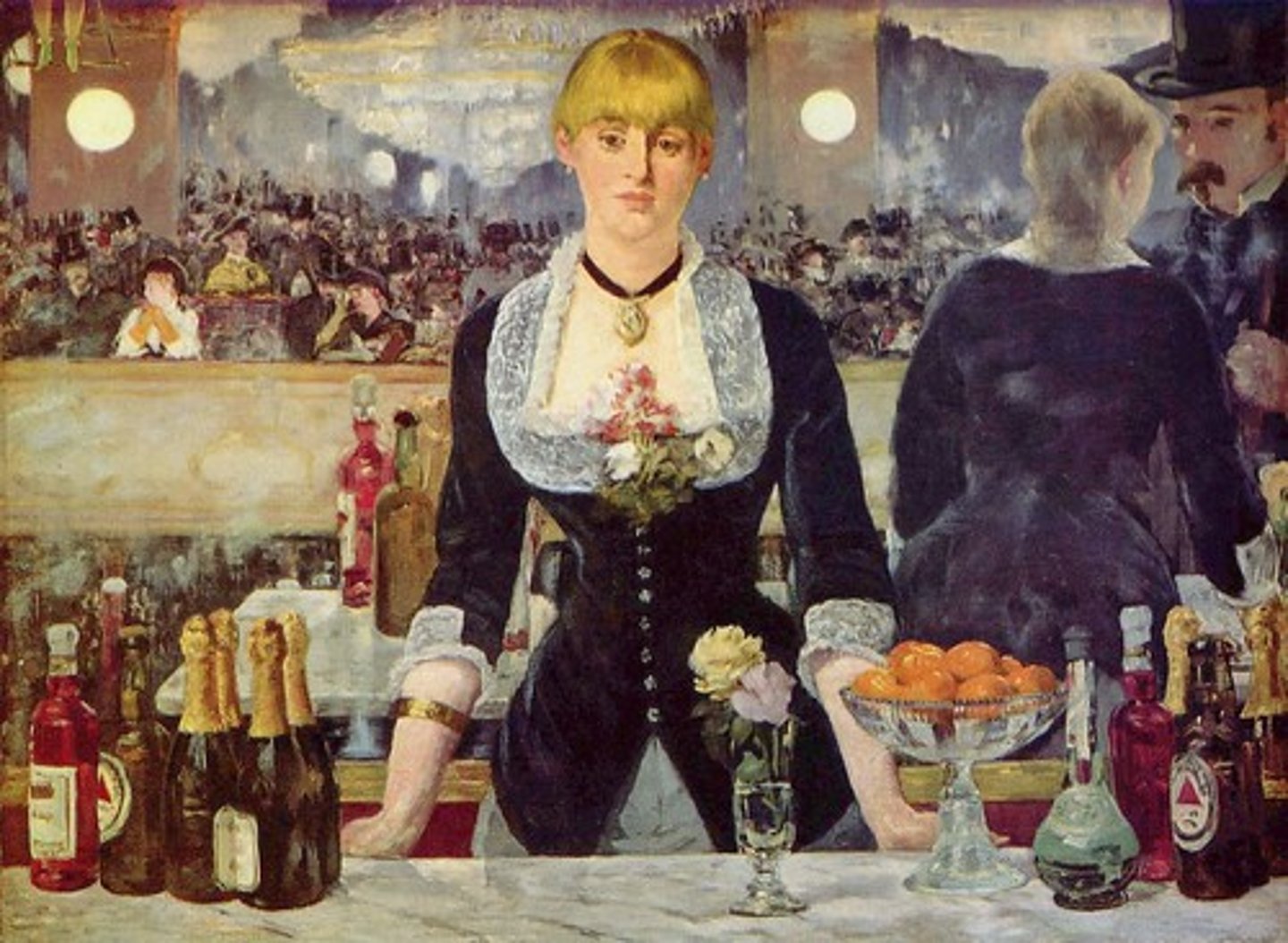
Thomas Eakins
Consumed with the idea of the human body. 1st time European art was seen in America at a large scale
The Gross Clinic
Thomas Eakins, 1875. Portrait of Dr. Samuel Gross. Focus of the painting on Gross’s face and on surgery to symbolize the light of science
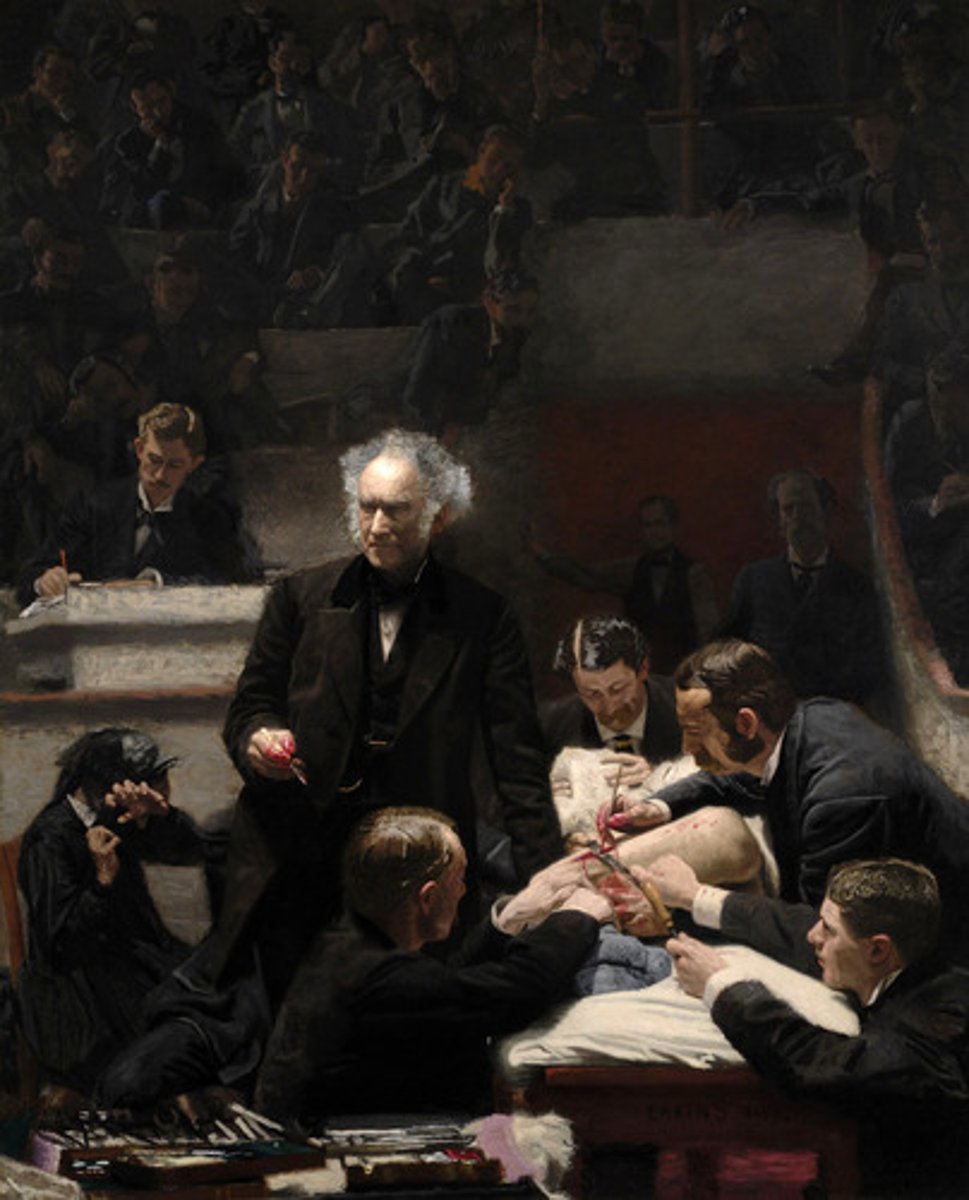
Winslow Homer
Artist begins as a lithographer and works for Harper’s Weekly, sent to the front with the Union army
Veteran in a New Field
Winslow Homer, 1865. Sheaths of wheat represent the soldiers cut down from the civil war.
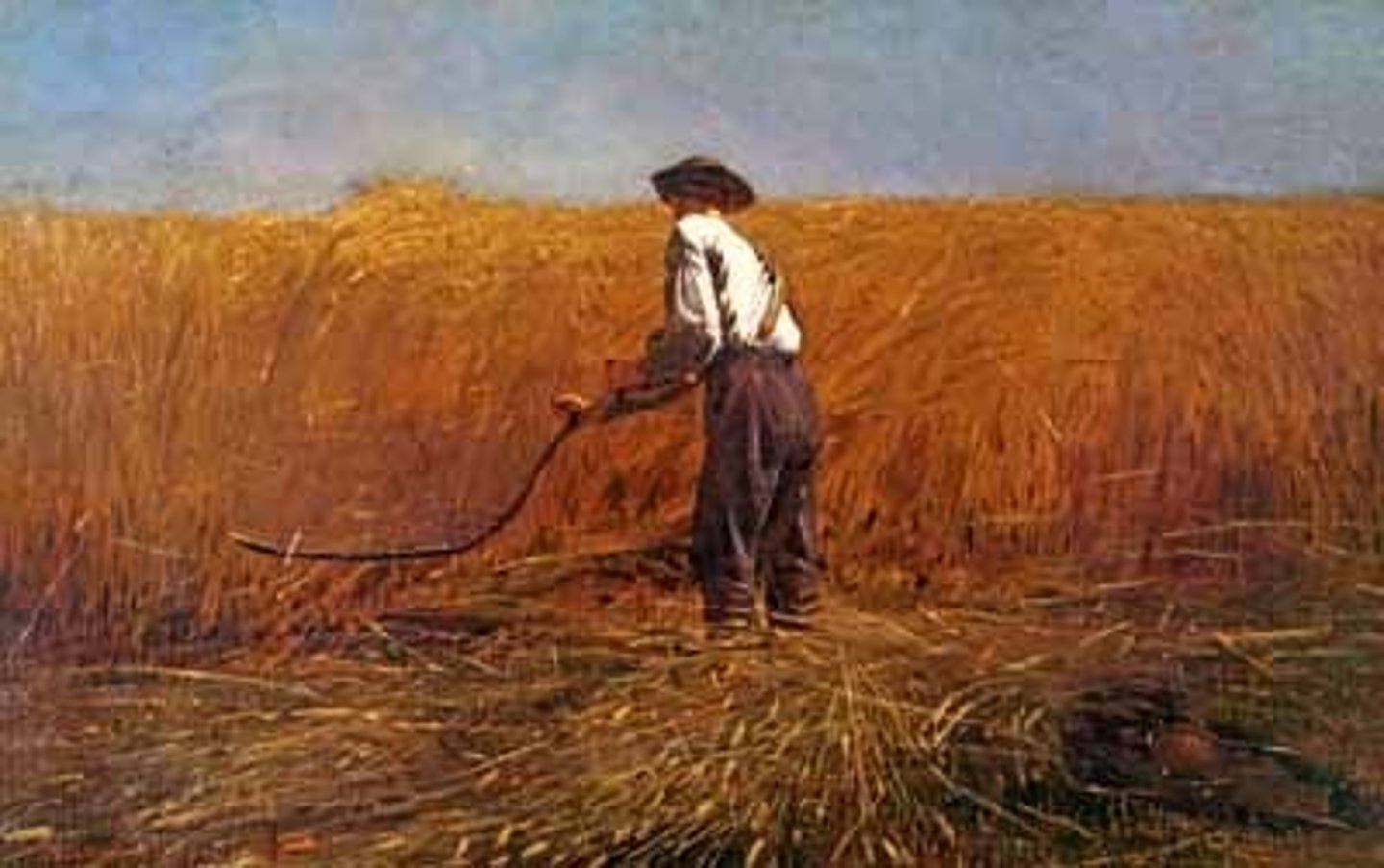
Prisoners from the Front
Winslow Homer, 1866
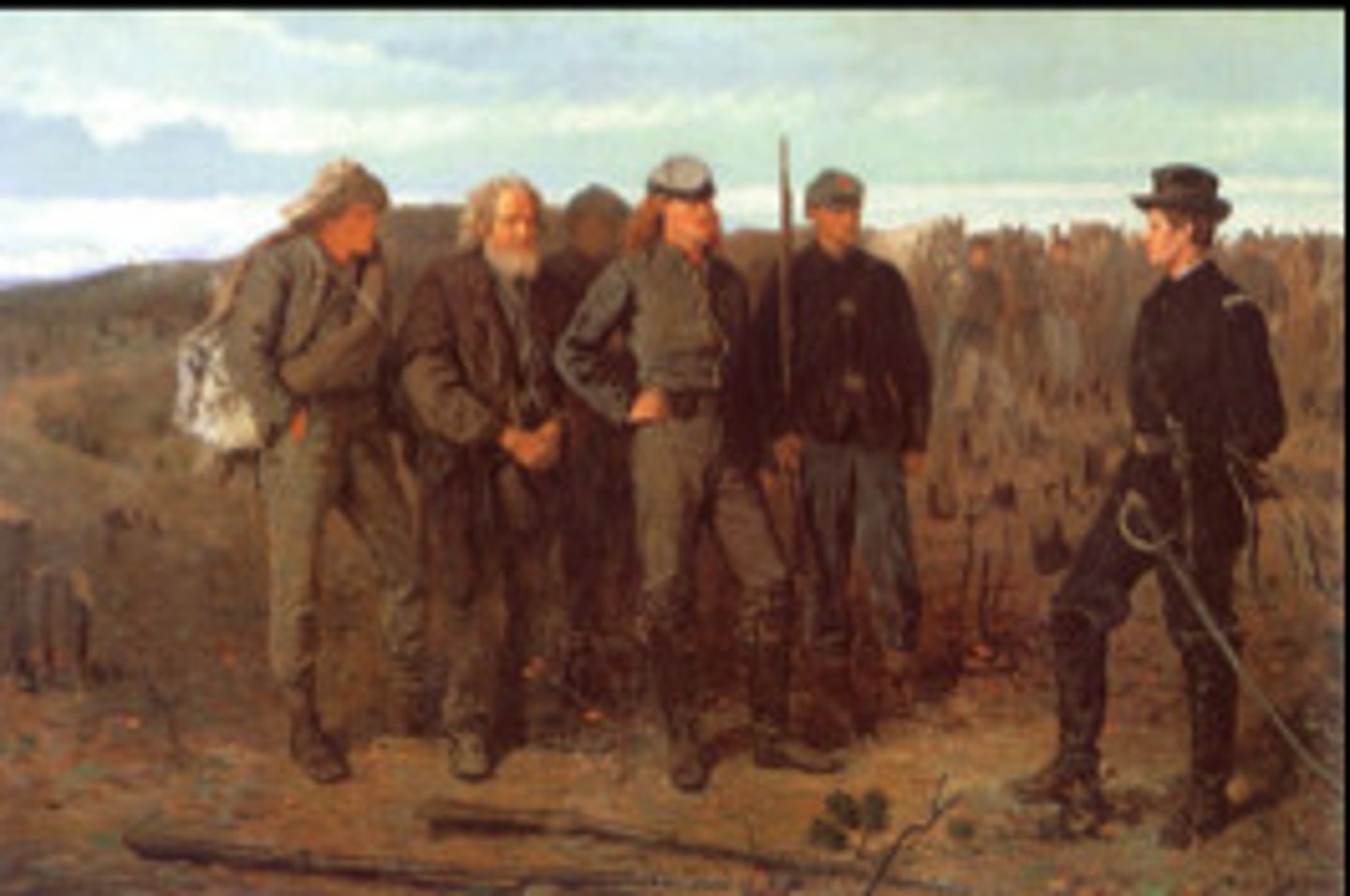
Daguerrotype
a photograph made by an early method on a plate of chemically treated metal (developed by Louis JM Daguerre)
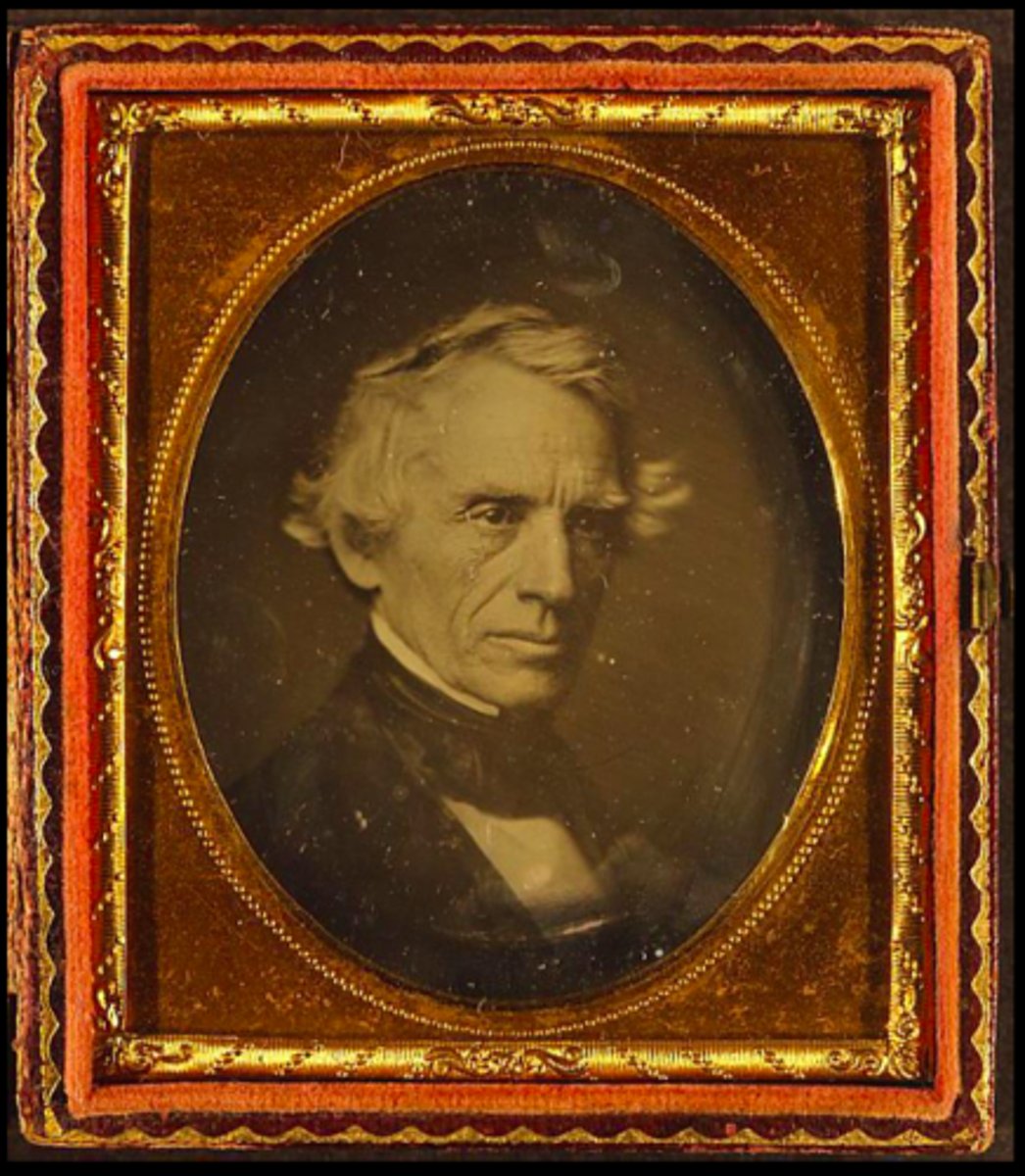
William Fox Talbot
inventor of calotype photography. First to experiment with printing on paper in 1819.
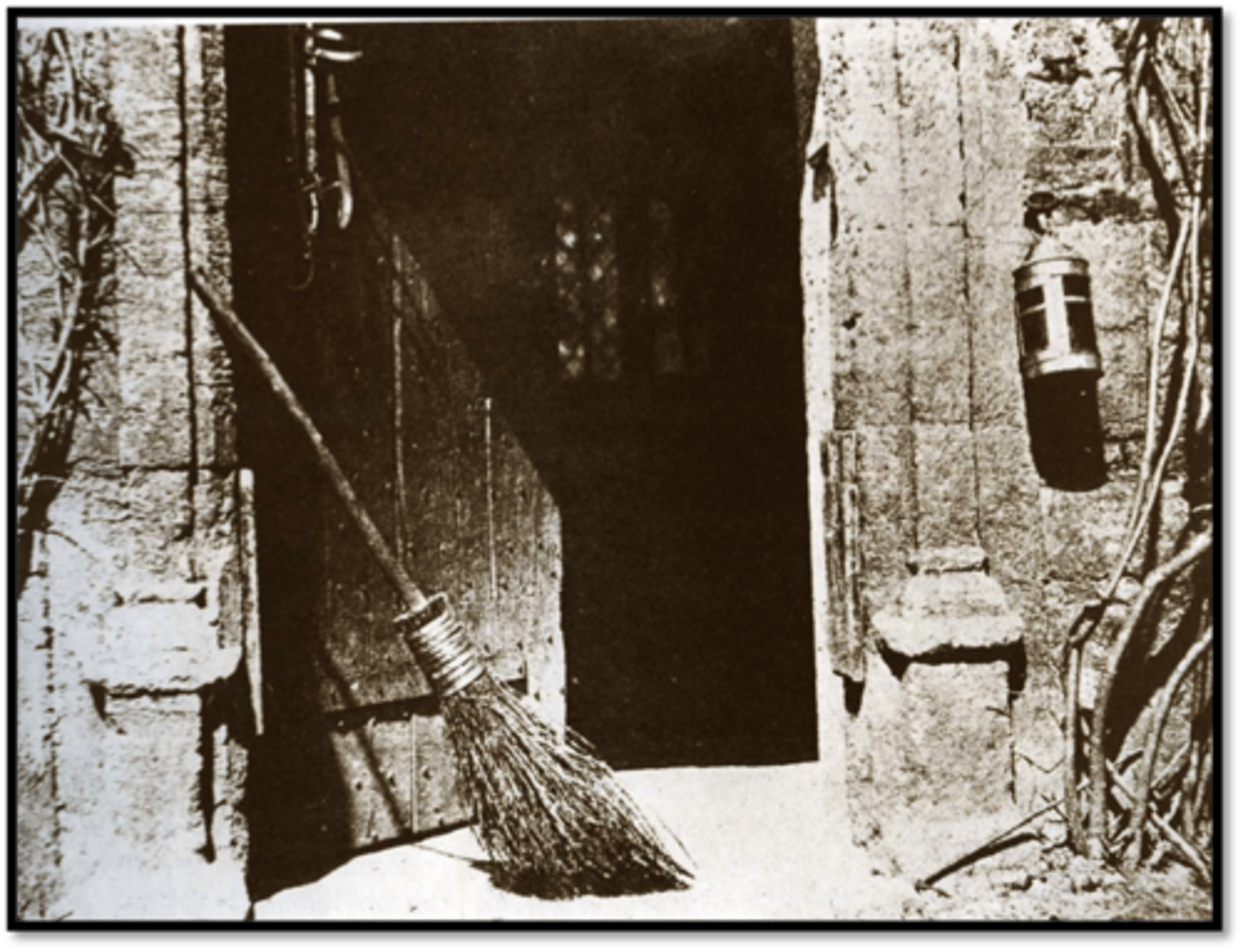
Matthew B. Brady
Nineteenth-century photographer acclaimed for his Civil War images and portraits of famous people such as Lincoln
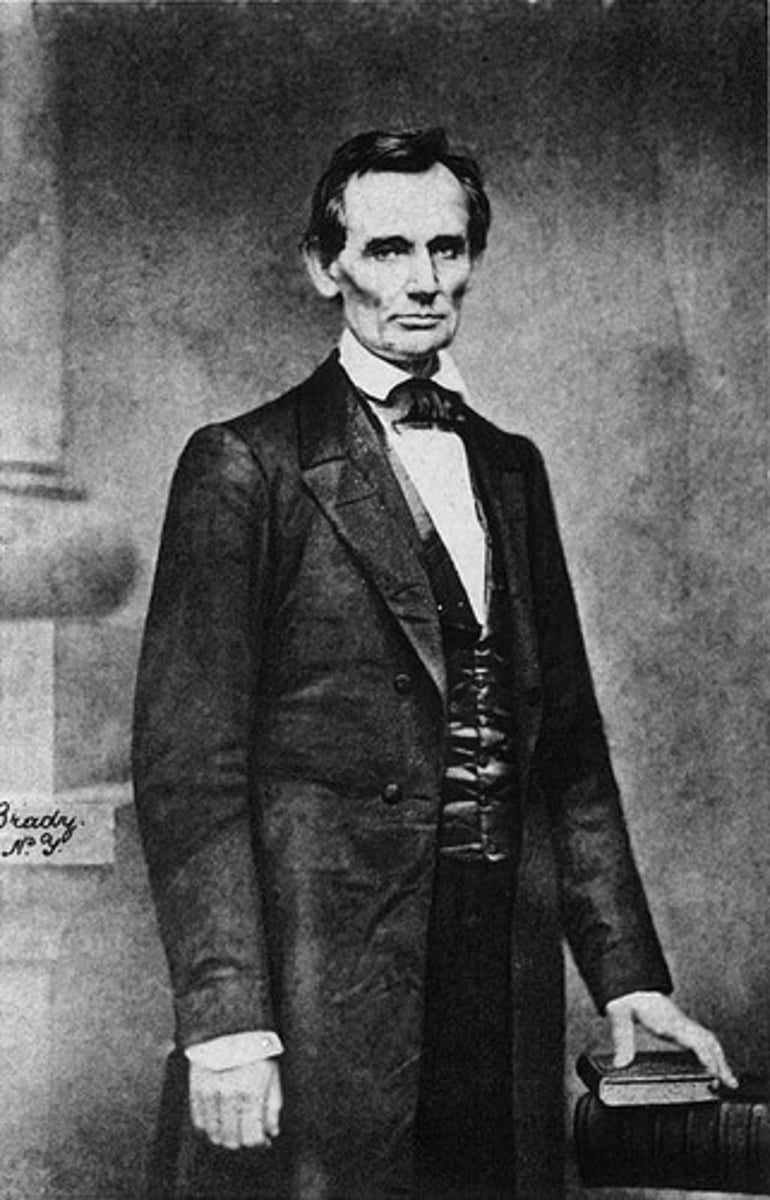
Alexander Gardner
Used to work for Matthew Brady, but left when Brady would often take credit of their work
In the Devil's Den
Alexander Gardner, 1863. Corpse was dragged to this location to create a dramatic narrative

Carleton Watkins
Photographed landscapes, including yosemite in late 1800s. Most of his negatives were destroyed in SF earthquake
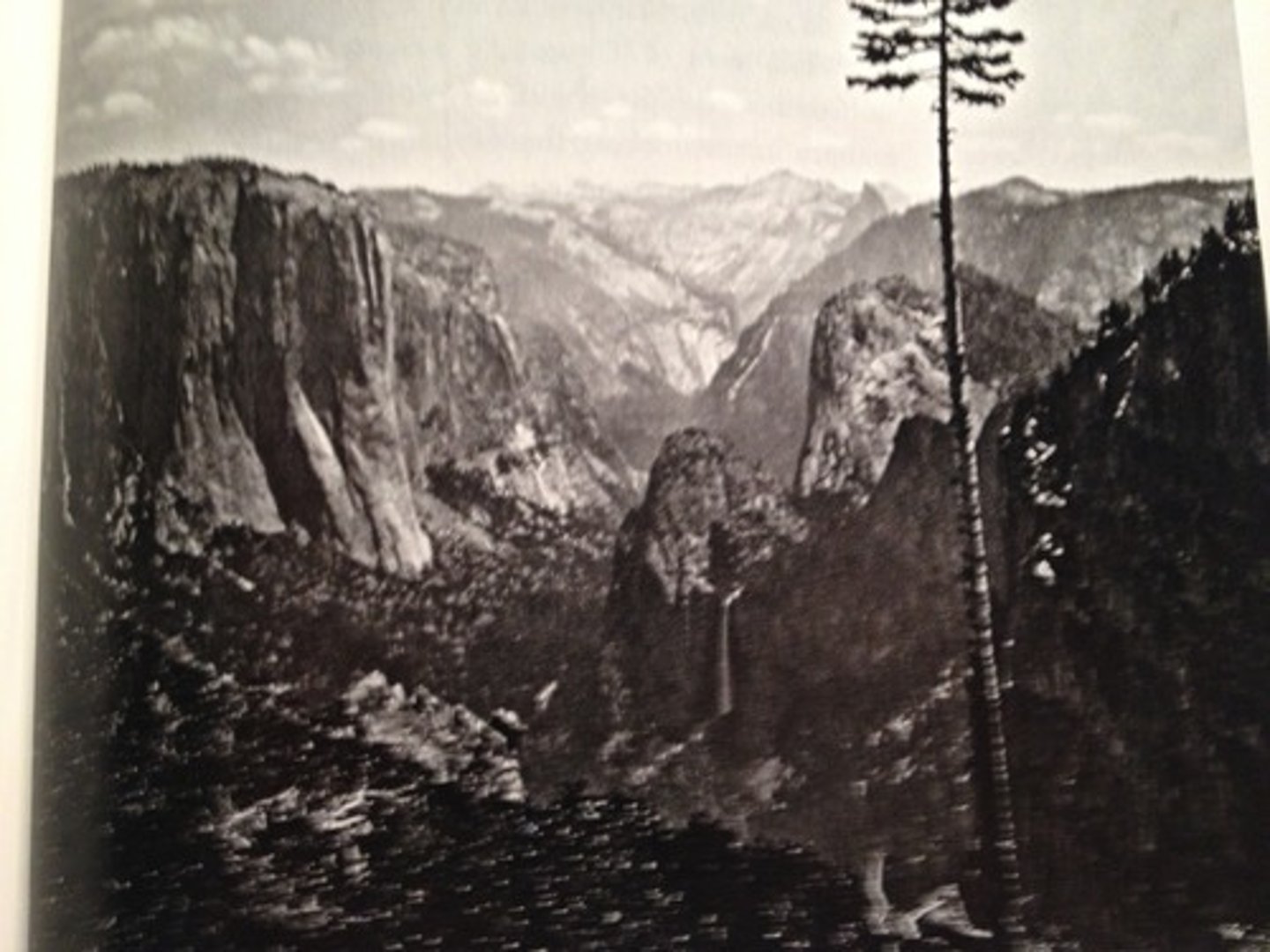
Eadweard Muybridge
United States motion-picture pioneer remembered for his pictures of running horses taken with a series of still cameras (1830-1904). Determined if a race horse has all 4 legs off the ground at once
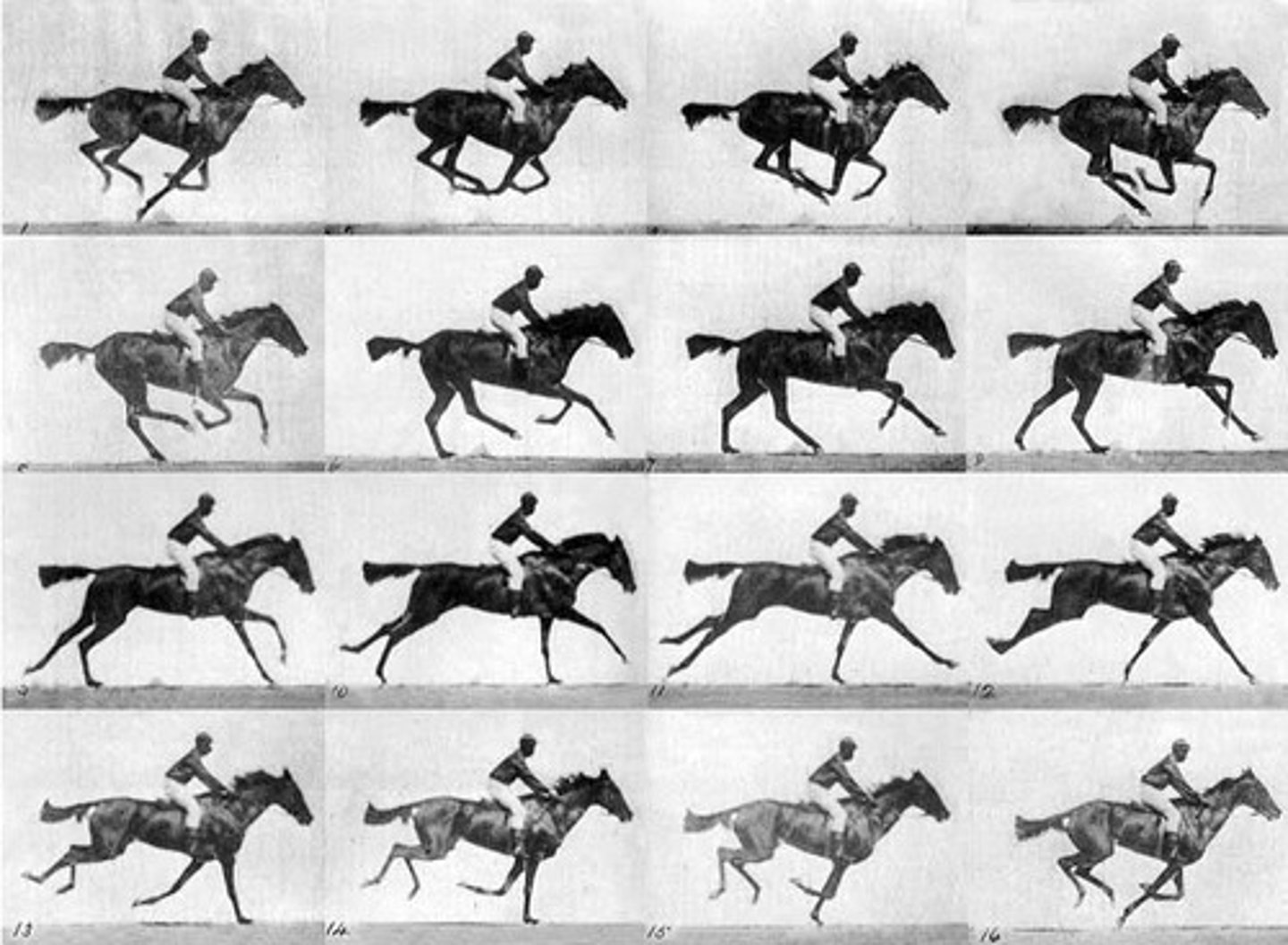
Floating Worlds (Ukiyo)
term for centers of urban culture in Japan under the Tokugawa shogunate.
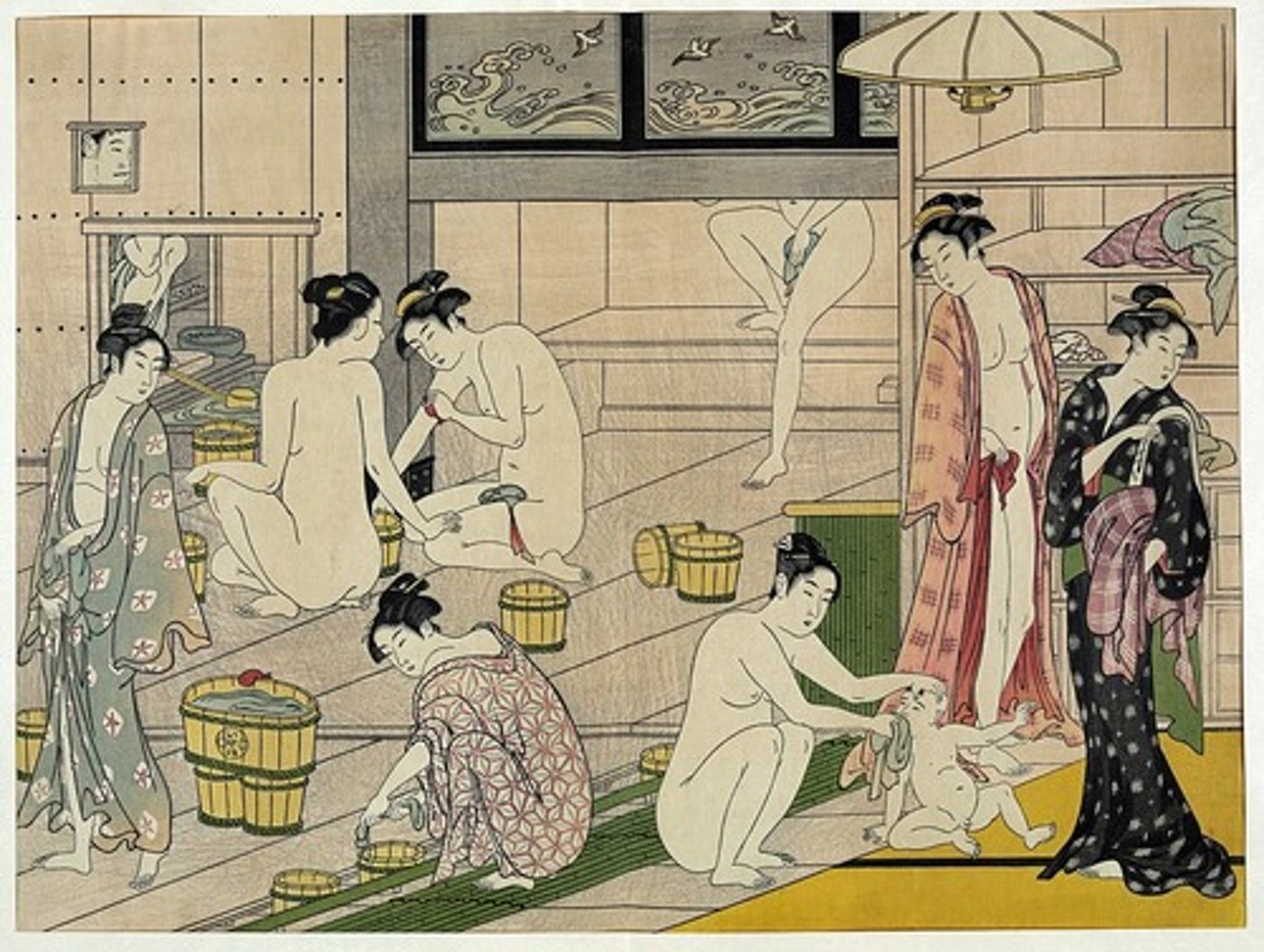
Characteristics of floating worlds (Ukiyo)
flat, unshaded colors, bold outlines, and asymmetrical compositions. Prints often feature aerial perspectives and experimental cropping, focusing on a single subject with linework and color emphasizing it against a natural background. Popular themes include kabuki actors, courtesans, and scenes of pleasure, along with historical and mythical figures.
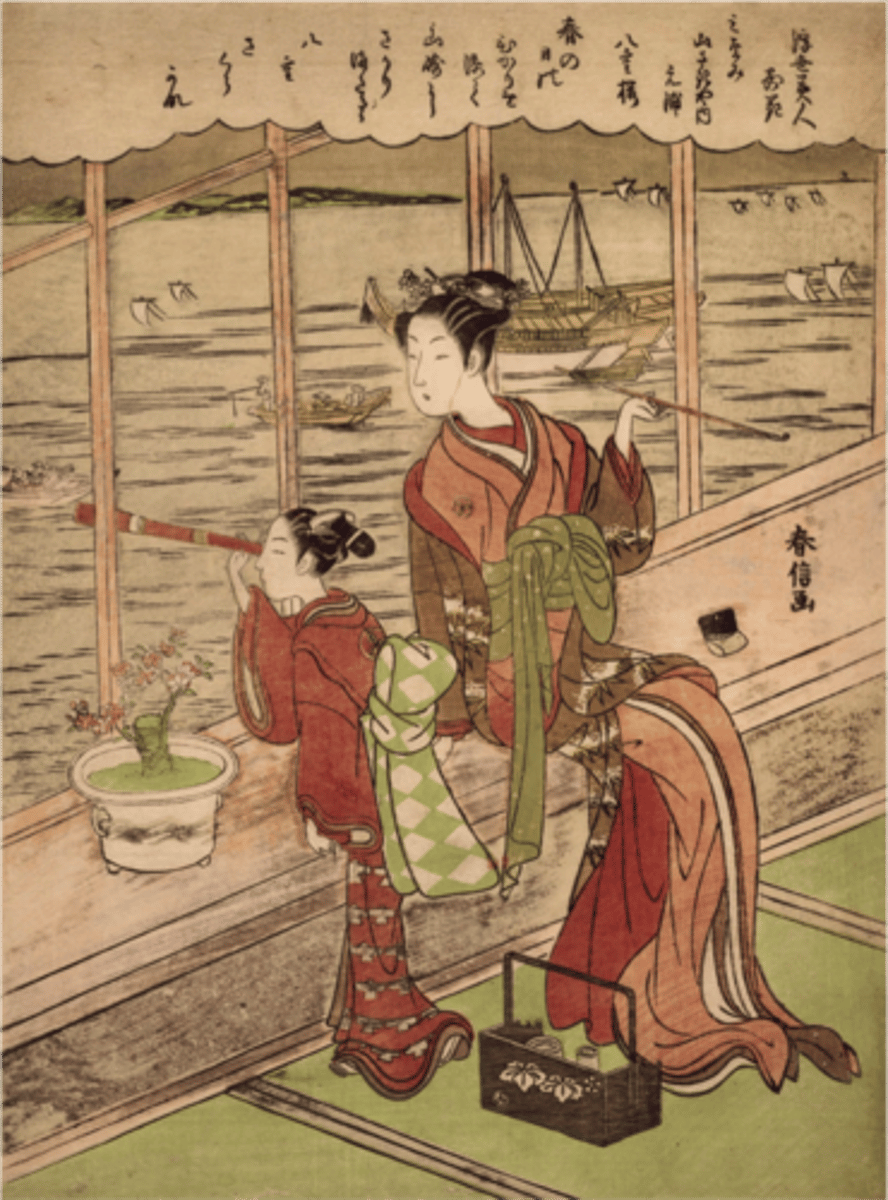
Thirty-six Views of Mount Fuji (series)
Hokusai, 1830-32. Mt. Fuji is the tallest mountain and place of devotion
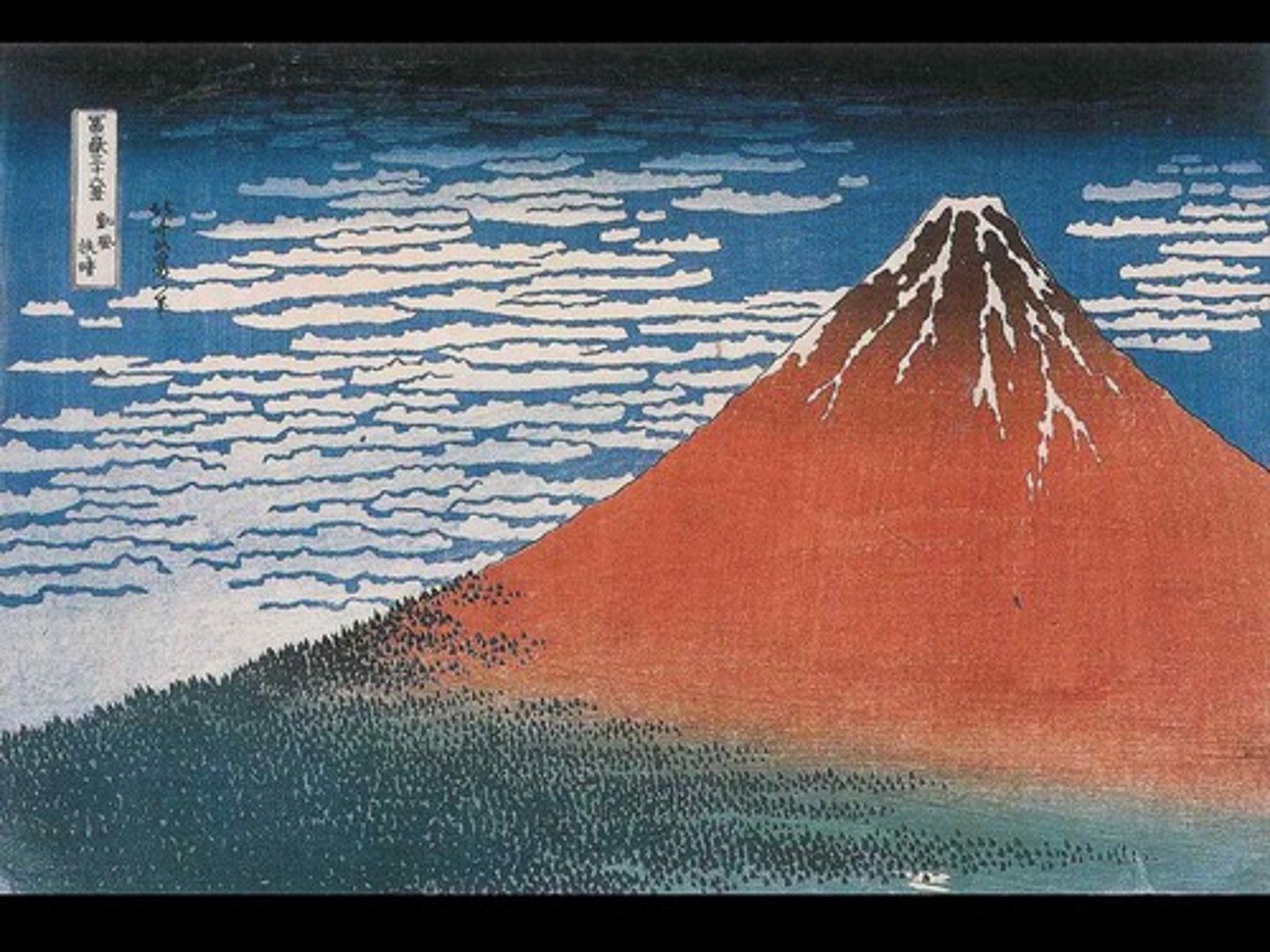
The Great Wave
Katsushika Hokusai. About man vs nature.
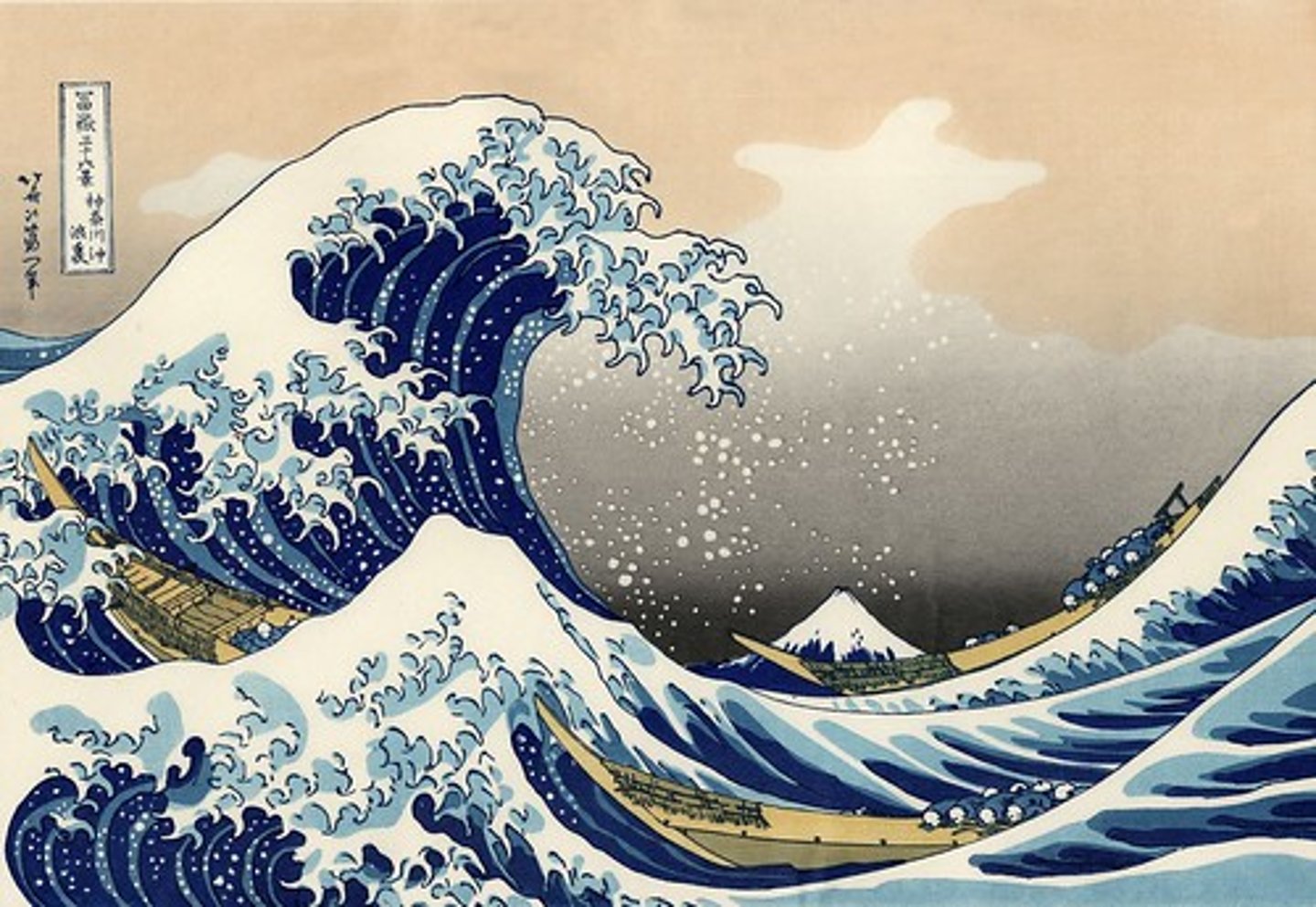
Characteristics of impressionist paintings
Visible brushstrokes, light colors, emphasis on light and the changing qualities of it, ordinary subject matter, unusual visual angles, emphasis on accuracy over precision.
Claude Monet
impressionist movement founder who relied on the viewer's eye to blend brush strokes into patches of color. Often painted en plein air
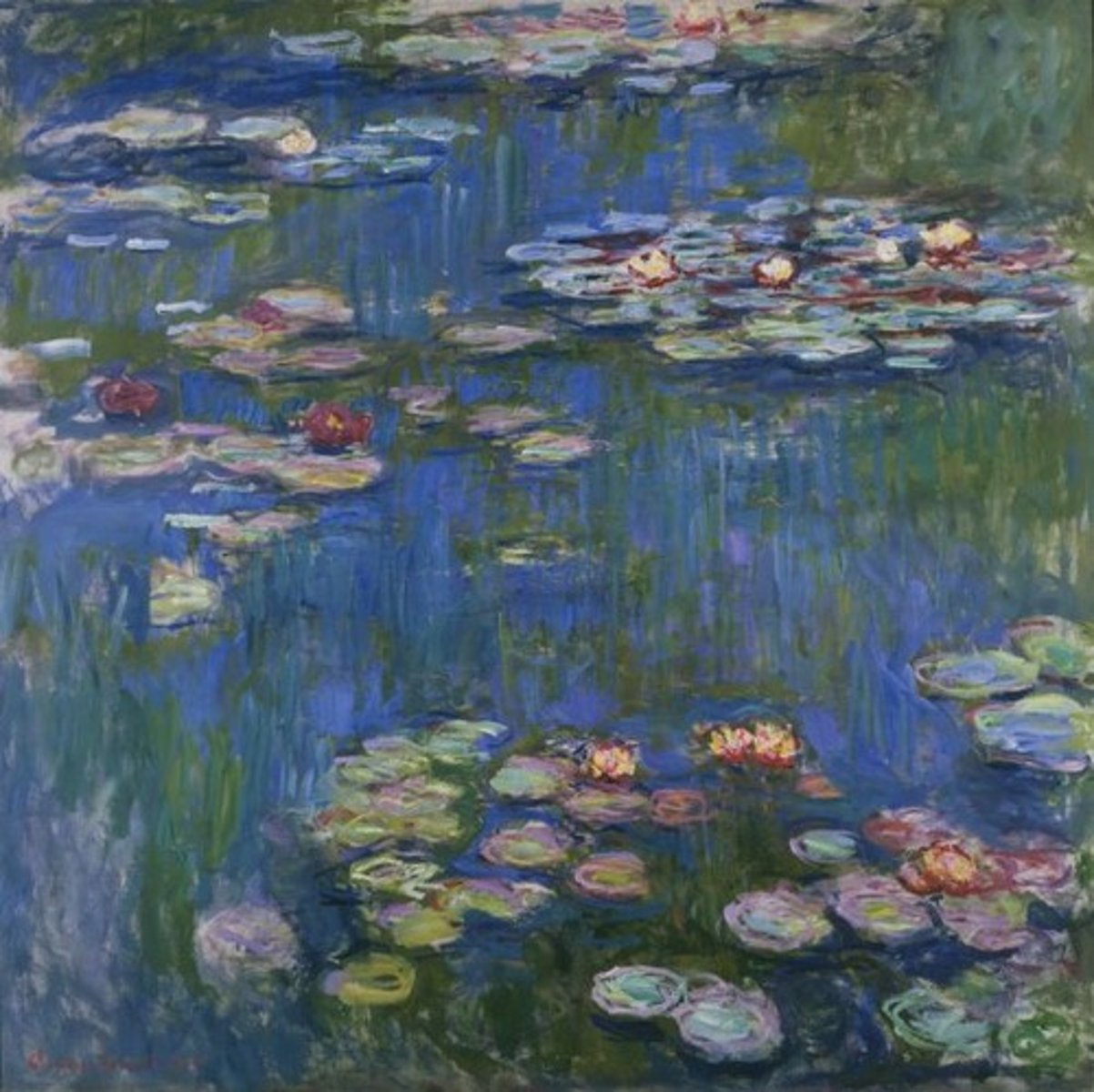
Impression Sunrise
Claude Monet, 1873. Painting ultimately gave “Impressionists” their name. Colors are placed side by side
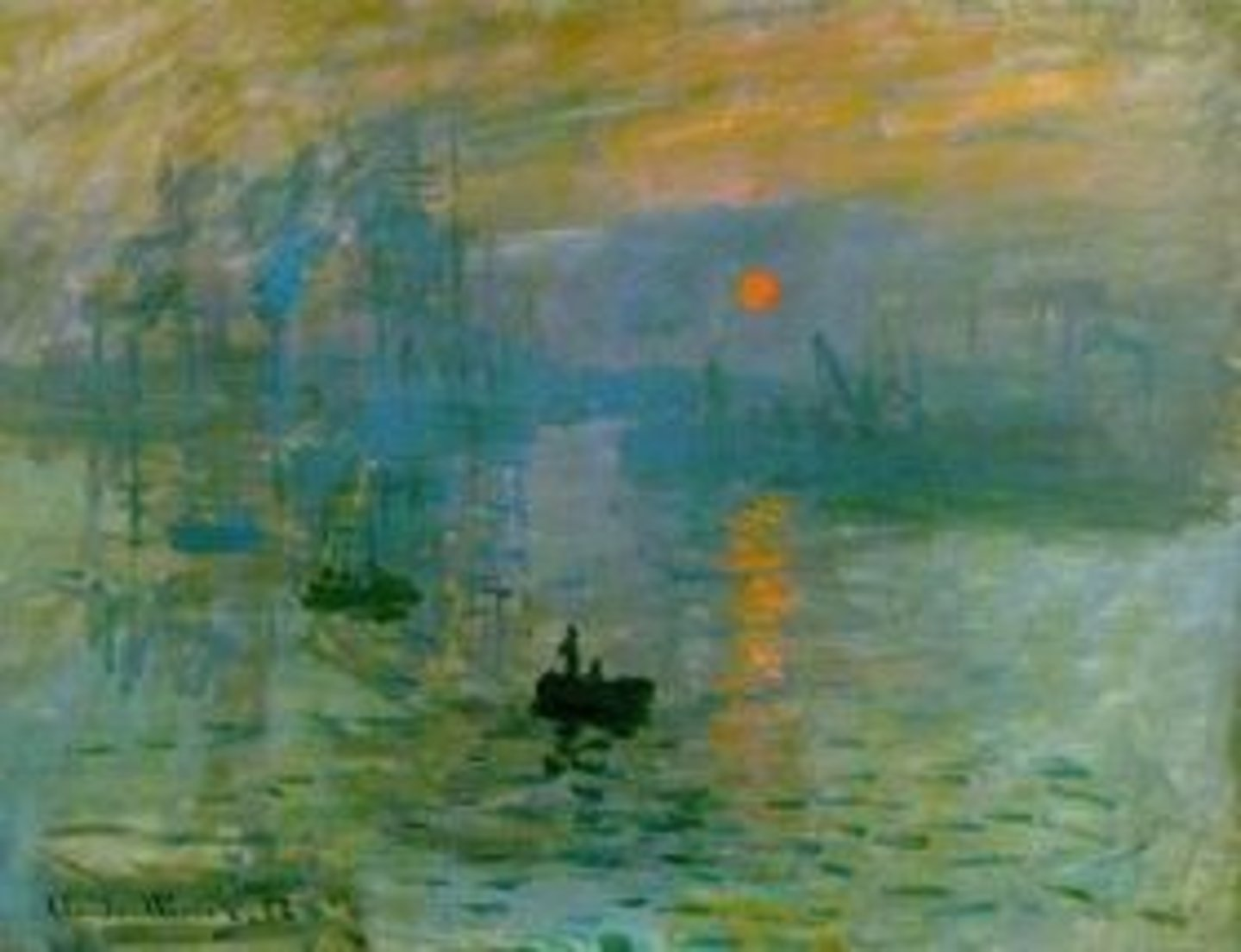
Monet's Garden
Moved to Giverny and grows gardens which become a subject of his works
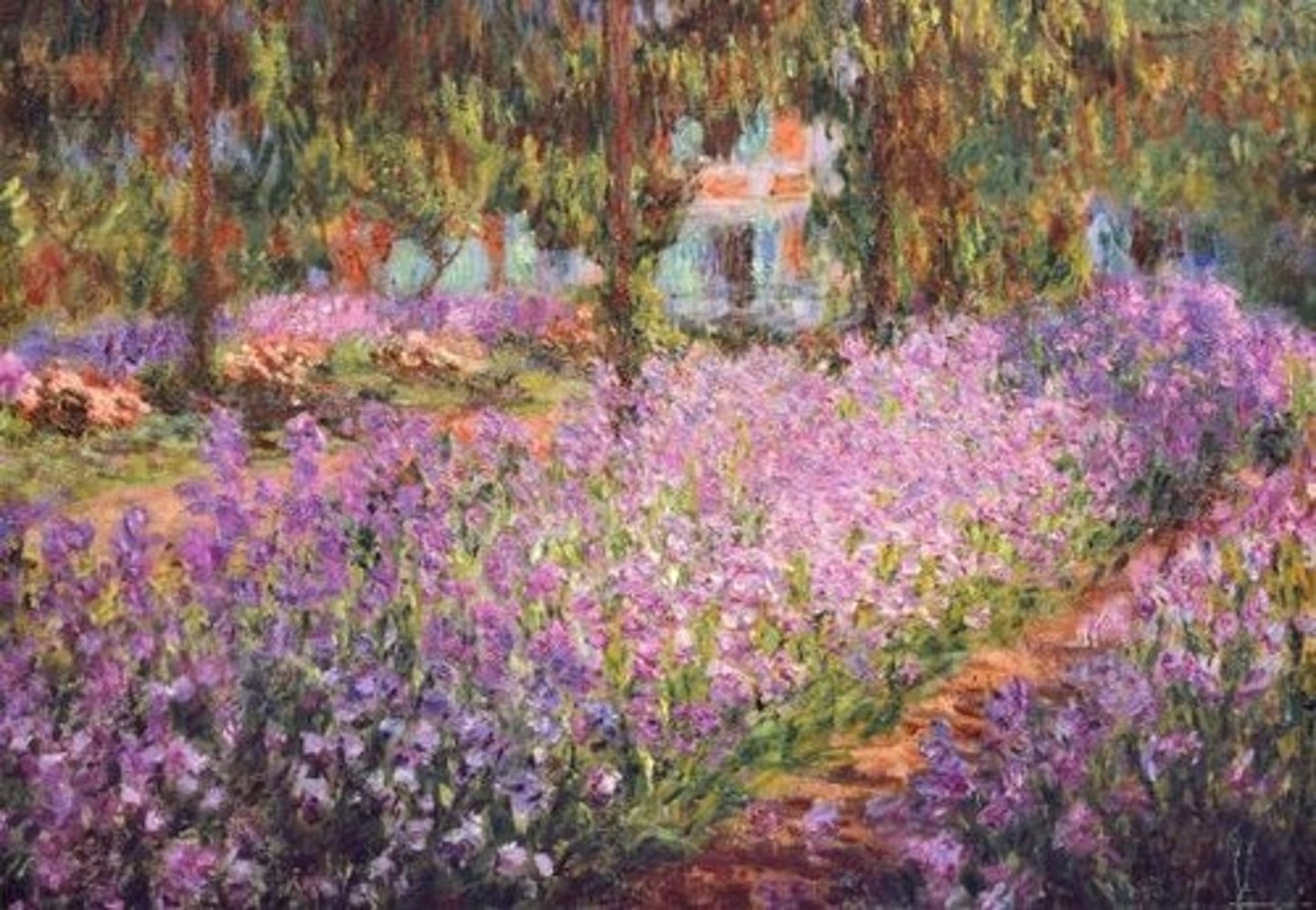
Gustave Caillebotte
Paris Street, Rainy Day, 1877. Crucial patron that bought many works by his Impressionist friends
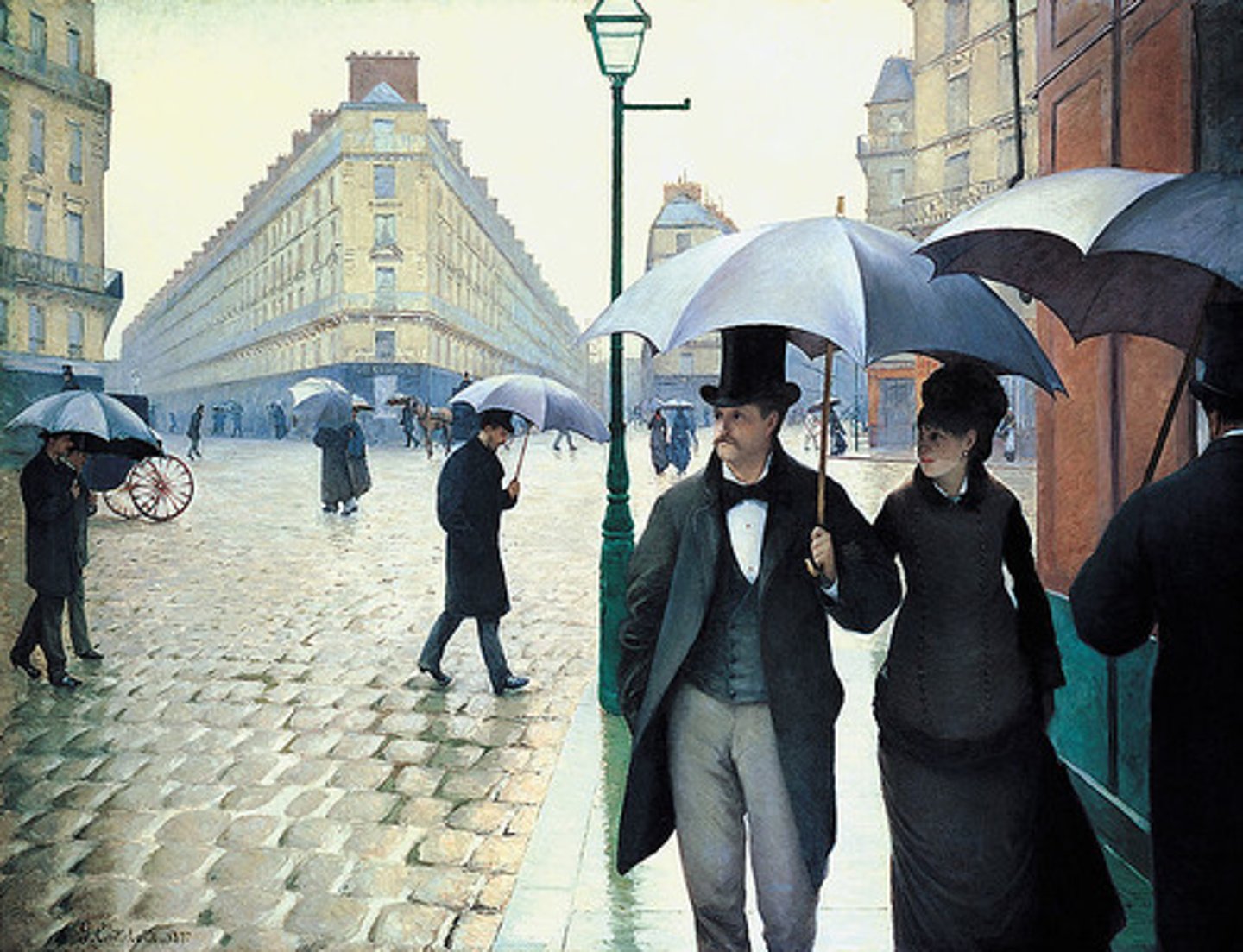
Edgar Degas
A nineteenth-century French painter and sculptor. Among his preferred subjects were ballet dancers and scenes of cafe life.
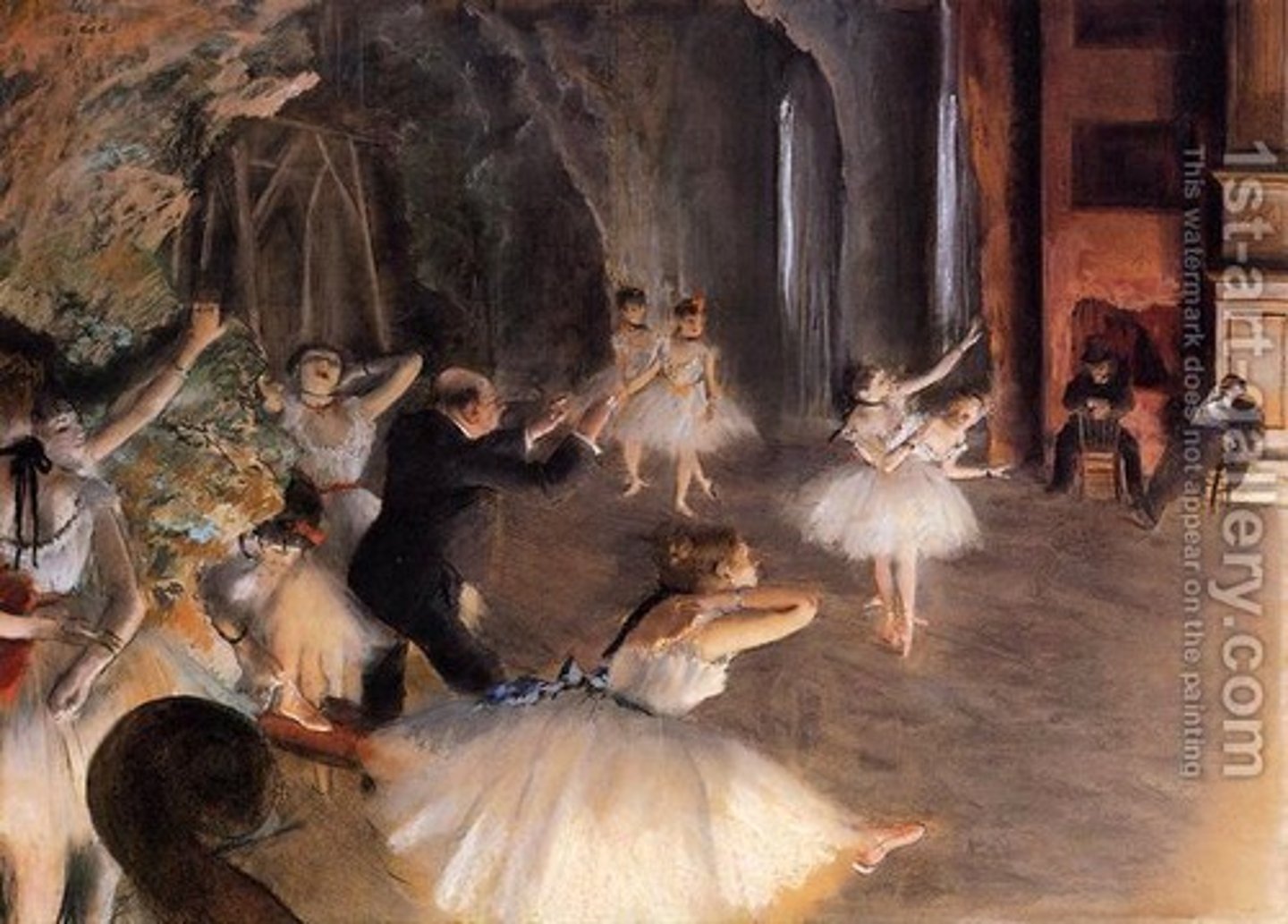
Mary Cassatt
American painter whose sensitive portrayals made her one of the prominent new impressionists Only woman to exhibit with the impressionists. Mainly painted women and children.
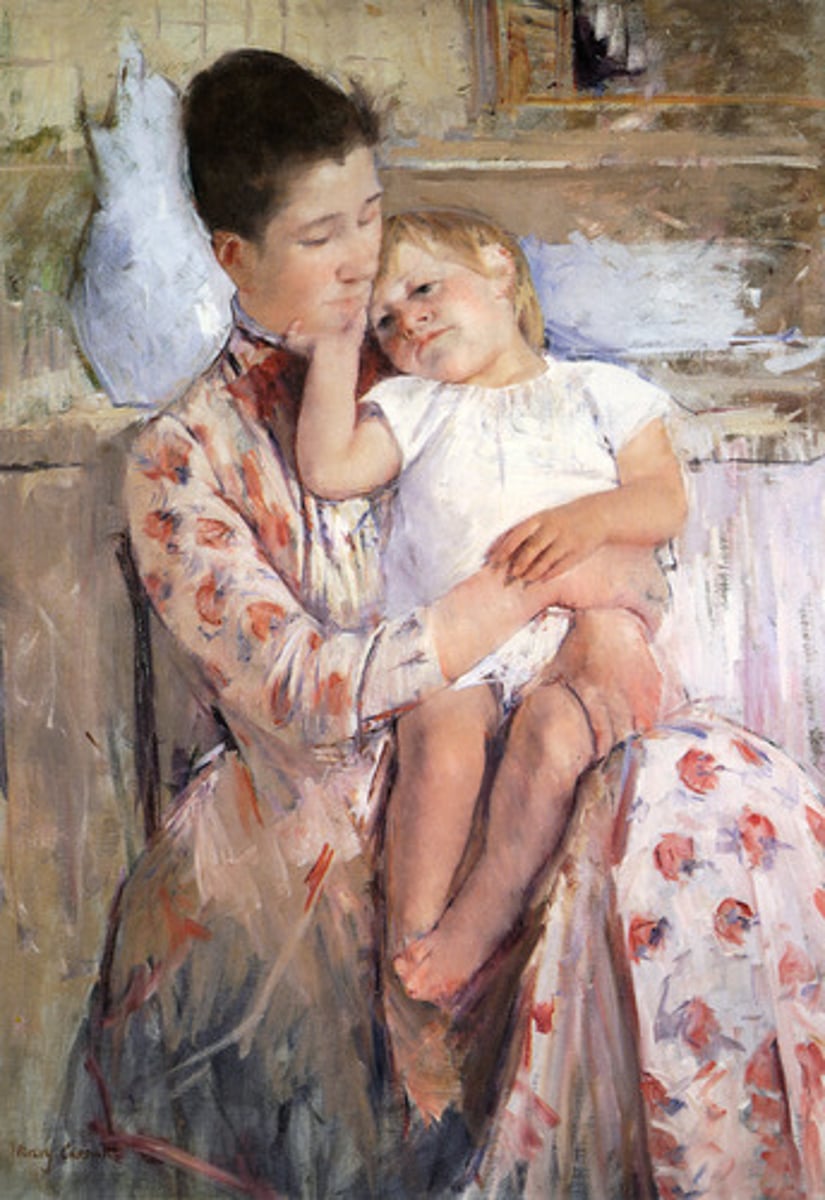
Berthe Morisot
broke the practice of women being only amateur artists and became a professional painter. Her dedication won her the disfavor of academics. She used light colors and flowing brushwork. "Summer's Day", 1879.
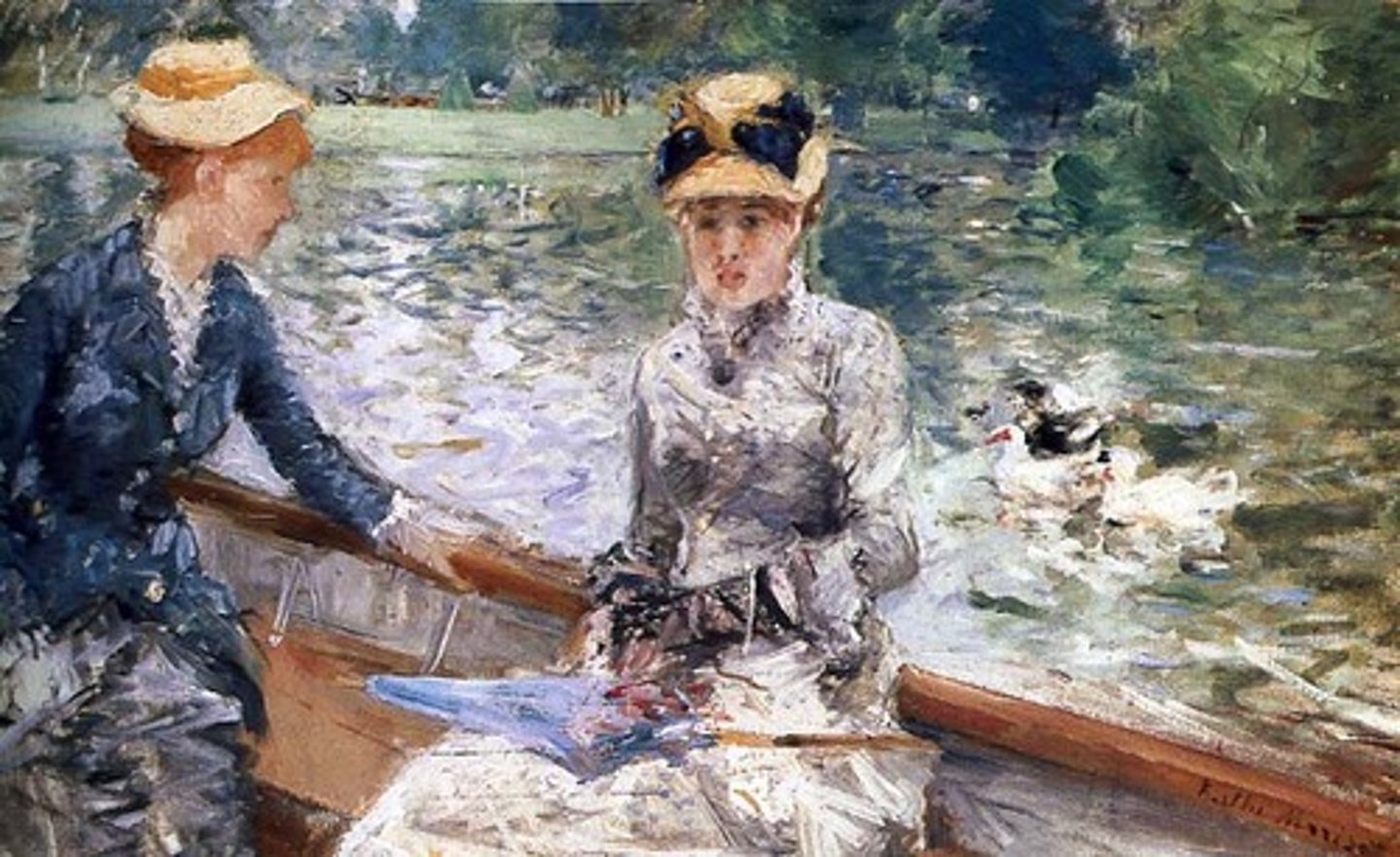
Nocturne in Black and Gold, The Falling Rocket
J.A.M. Whistler, 1875. Landmark Piece
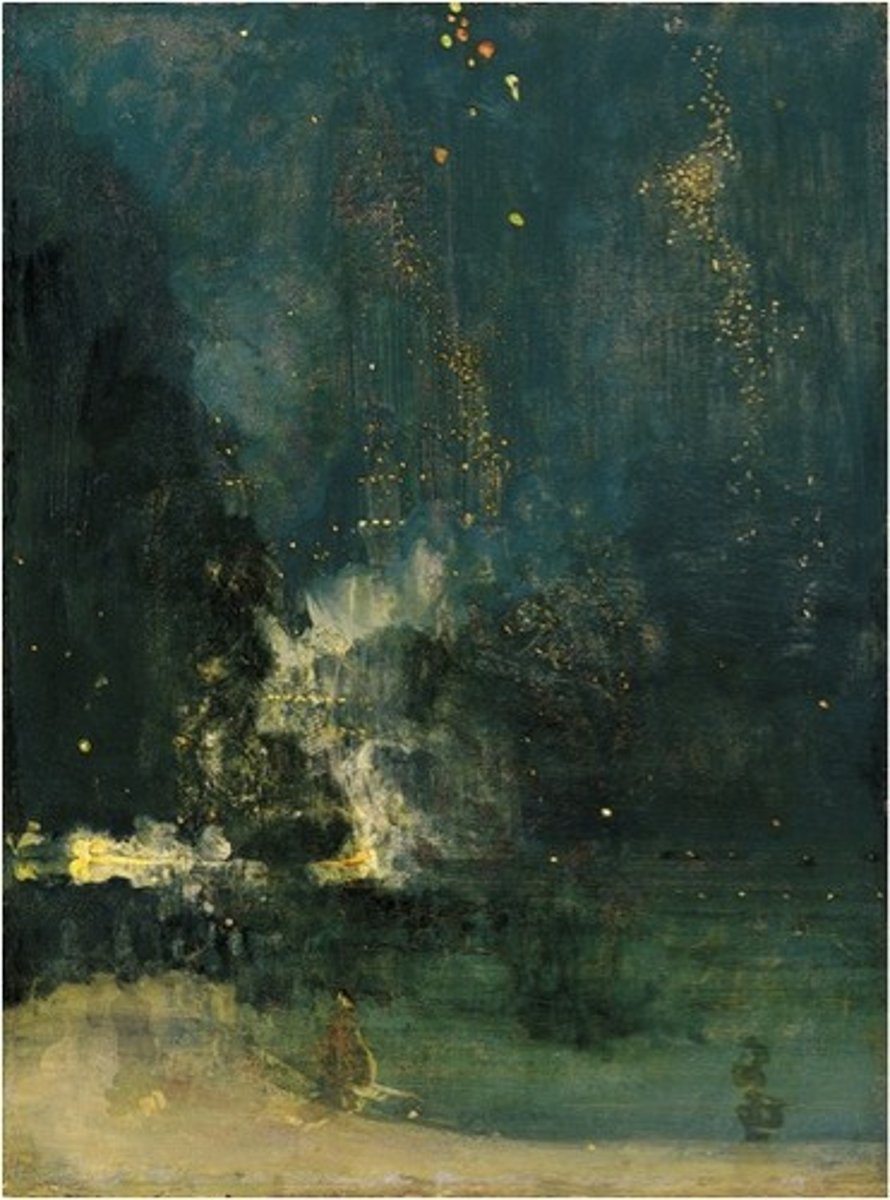
Arrangement in Grey and Black No. 1
J.A.M. Whistler. Portrait of Whistler's Mother, a study in form, color, and shape. Became the symbol of motherhood
